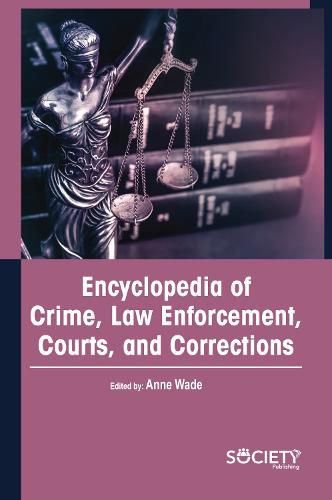Readings Newsletter
Become a Readings Member to make your shopping experience even easier.
Sign in or sign up for free!
You’re not far away from qualifying for FREE standard shipping within Australia
You’ve qualified for FREE standard shipping within Australia
The cart is loading…






A crime is an unlawful act for which someone will be subject to a special punishment from the government It is usually serious violation of the law. Crimes are prosecuted by prosecutors. Such attorneys may represent the city, county, state, or federal government. Examples include state attorneys general, federal district attorneys, and district attorneys. Criminal offences are classified as major (felony) or minor (misdemeanor) offences against public policy, or infractions, and are tried according to the rules of the Criminal Procedure Code. The criminal justice system refers to the collection of federal, state, and local agencies that deal with crime. These agencies deal with suspects, defendants, and convicted criminals, and are interdependent in that the decisions of one agency affects other agencies. The basic framework of the system consists of the legislature, the judiciary, and the executive branches of office. This volume of cases defines the main components of the justice system, the police, courts, and correctional facilities, which serve to prevent or deter crime by arresting, adjudicating, and punishing criminals. The police department is a public institution whose role is to maintain order, enforce criminal laws and provide services to citizens. The court is where the criminal responsibility of a person accused of violating a criminal law is determined by a jury or a judge. Corrections can include probation, imprisonment, and a range of new community-based sanctions such as electronic surveillance and house arrest. The purpose of correctional institutions is to punish, rehabilitate, and protect public safety. In some countries, the purpose is only to publish and protect the public with other groups taking on the rehabilitative functions.
$9.00 standard shipping within Australia
FREE standard shipping within Australia for orders over $100.00
Express & International shipping calculated at checkout
A crime is an unlawful act for which someone will be subject to a special punishment from the government It is usually serious violation of the law. Crimes are prosecuted by prosecutors. Such attorneys may represent the city, county, state, or federal government. Examples include state attorneys general, federal district attorneys, and district attorneys. Criminal offences are classified as major (felony) or minor (misdemeanor) offences against public policy, or infractions, and are tried according to the rules of the Criminal Procedure Code. The criminal justice system refers to the collection of federal, state, and local agencies that deal with crime. These agencies deal with suspects, defendants, and convicted criminals, and are interdependent in that the decisions of one agency affects other agencies. The basic framework of the system consists of the legislature, the judiciary, and the executive branches of office. This volume of cases defines the main components of the justice system, the police, courts, and correctional facilities, which serve to prevent or deter crime by arresting, adjudicating, and punishing criminals. The police department is a public institution whose role is to maintain order, enforce criminal laws and provide services to citizens. The court is where the criminal responsibility of a person accused of violating a criminal law is determined by a jury or a judge. Corrections can include probation, imprisonment, and a range of new community-based sanctions such as electronic surveillance and house arrest. The purpose of correctional institutions is to punish, rehabilitate, and protect public safety. In some countries, the purpose is only to publish and protect the public with other groups taking on the rehabilitative functions.